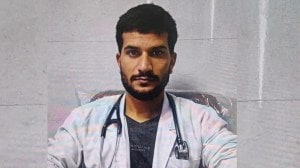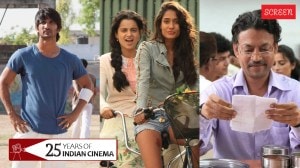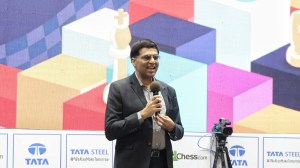Writer’s Corner: In a book about M Visvesvaraya, Aparajith Ramnath looks beyond the basic: ‘I wanted to know about his intellectual influences’
Aparajith Ramnath’s ‘Engineering a Nation: The Life and Career of M Visvesvaraya (1861-1962)’ is a look at the life of the renowned civil engineer who rose to be a national statesman.
 His latest work, ‘Engineering a Nation: The Life and Career of M Visvesvaraya (1861-1962)’ takes a look at the life of the civil engineer who rose to be a statesman at the national level, and one with international sensibilities and thoughts.
His latest work, ‘Engineering a Nation: The Life and Career of M Visvesvaraya (1861-1962)’ takes a look at the life of the civil engineer who rose to be a statesman at the national level, and one with international sensibilities and thoughts.Engineering as a craft is something deeply tied to the history of Bengaluru – some of its oldest institutions are those known for producing top engineers. The figures most revered in the city are often those that made sweeping changes to the infrastructure of the city and Mysore state itself – such as Sir M Visvesvaraya, possibly the country’s most well-known engineer. The latest historian to explore his life is Aparajith Ramnath, who is an associate professor at Ahmedabad University.
Ramnath’s first book, ‘The Birth of an Indian Profession: Engineers, Industry, and the State, 1900–47’, provides an excellent insight into the crucial pre-independence years for the development of engineering in India, amidst a time of global turbulence. His latest work, ‘Engineering a Nation: The Life and Career of M Visvesvaraya (1861-1962)’ takes a look at the life of the civil engineer who rose to be a statesman at the national level, and one with international sensibilities and thoughts.
“When I was researching my first book, his name (Visvesvaraya’s) popped up in many sources. It was clear that he was an outstanding figure in many ways…there’s a lot of basic information out there, but there was more I wanted to know about his career, his intellectual influences, and how his engineering work related to his work as a public intellectual and economic thinker,” Ramnath told The Indian Express.
“I used to visit friends and relatives in Bangalore as a child, but I grew up mostly in Chennai. When I graduated from BITS Pilani, I had to do a six-month internship and then got a job in a Bangalore company,” he said.
Ramnath later left for England to study the history of science and technology at Oxford University and Imperial College London. “Visvesvaraya is so intimately connected to the city and had such a big impact – I came back to research, speak to people and see the various places that were important in his life,” he mentioned.
Moving into history from engineering was also a step that most people might not have taken. Ramnath said, “It was clear to me that it was not a field where I was going to be very creative….and I always had an interest in history and reading but had not thought seriously about becoming a historian. When I was working in Bangalore as an engineer, I had some time to think for myself…..so I started exploring options at the time. It really came home to me that history was something I really wanted to do – trying to imagine what the atmosphere must have been like, what motivated people in a different setting and how this impacts our own world today.”
He also shared his views on the process of writing history, stating that “there’s no tried and tested algorithm” and writing comes with a lot of trial and error.
“You have to explore and read very widely. The basic thing you need as a historian is what you call primary sources – what are the sources of information that are basically generated during the time you are studying. In the case of an individual, it could be letters written to other colleagues and friends, newspaper reports, government files and technical files that were authored. Of course you do use secondary material to understand the context, to understand the context of what was happening in Mysore at the time, for example. So it is a judicious mix of using primary and secondary sources,” Ramnath explained.
Ramnath had also tracked down Sir Visvesvarya’s personal papers – a copy of which are located on microfilm in Delhi, another set of which he also located in Mysore. He also combed through the state archives of Maharashtra and Karnataka alongside a host of old newspapers, magazines, and memoirs – in service of building the picture of a life that stretched over 100 years.
In terms of what someone getting into the field of history ought to do, Ramnath said, “If circumstances and life situations permit a formal training in history, that would be great, though I don’t hold that it is the only way to write good history. It can be learnt by doing – but you have to really read existing histories very carefully and analyse how they are put together, how is evidence treated, what kind of evidence provided for certain claims, how do you research with an open mind and……how do you avoid putting prejudices from your own time onto the time that you are studying.”







